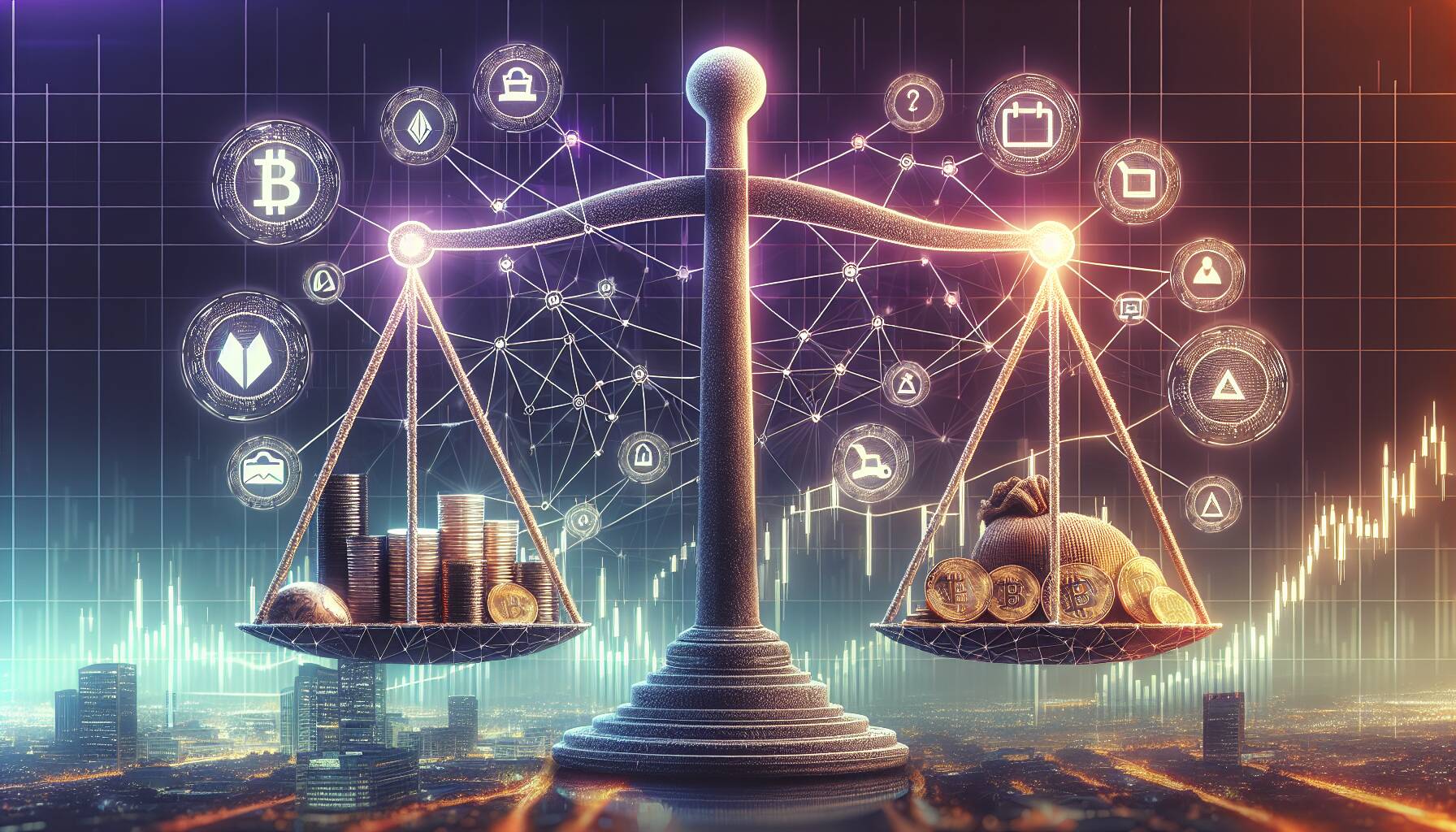Tokenization is rapidly emerging as a transformative trend in the cryptocurrency and finance sectors, poised to redefine the very nature of asset ownership and investment strategies, according to a recent report by Wall Street firm Bank of America (BAC). At its essence, tokenization involves converting real-world assets, such as stocks, bonds, real estate, and even art, into digital tokens that are securely recorded on a blockchain. This process is seen as a natural evolution of traditional investment vehicles, tracing its roots back through mutual funds, exchange-traded funds (ETFs), and beyond.
Analysts at Bank of America, led by Craig Siegenthaler, emphasize that tokenization offers myriad benefits that could change how investors access and manage their portfolios. Among these advantages is enhanced liquidity that allows for 24/7 trading, providing marketplaces for previously illiquid private assets. Furthermore, tokenization paves the way for faster, frictionless transactions, reducing the multi-day delays commonly associated with today’s financial transactions. Notably, the ability for fractional ownership diminishes investment minimums, thus expanding access to a broader range of investors.
“The value of real-world assets represented on-chain exceeds $28 billion,” noted data provider RWA.xyz.
Transparency remains a key advantage, as blockchain technology ensures immutable and publicly available records of ownership and transactions. Additionally, tokenization has the potential to lower fees by removing intermediaries, while smart contracts streamline processes such as dividend payments and voting rights, effectively managing regulatory requirements without human intervention.
However, this promising landscape is not without its challenges. Bank of America highlighted significant hurdles that tokenization must overcome before achieving widespread acceptance. Regulatory uncertainty poses the most substantial risk, as current policymakers may not remain consistent in their support. Furthermore, custody issues could jeopardize investor access to their assets if private keys are lost, with adequate institutional custody solutions still in development.
Moreover, technological vulnerabilities in smart contracts and blockchain systems could expose investors to risks, while integrating these new technologies into existing financial frameworks presents additional obstacles. In a market already characterized by deep liquidity and robust investor protections, the case for tokenized assets becomes more complicated.

Tokenization in Financial Assets
Key points from the Bank of America report on tokenization:
- Definition of Tokenization: Conversion of ownership of real-world assets into digital tokens on a blockchain.
- Historical Context: Follows the lineage of mutual funds, separately managed accounts, collective investment trusts, and ETFs.
Potential impacts on readers’ lives:
- Enhanced Liquidity: 24/7 trading could enable access to secondary markets for previously illiquid private assets.
- Frictionless Settlements: Faster transaction times, eliminating the multi-day delays common in financial markets.
- Fractional Ownership: Lower investment minimums may broaden access to diversified portfolios.
- Transparency: Immutable blockchain ledgers ensure publicly accessible records of ownership and transactions.
- Lower Fees: Potential reduction in costs by removing intermediaries in financial transactions.
- Automation via Smart Contracts: Streamlining processes like dividend payments and regulatory compliance.
“The value of real-world assets represented on-chain exceeds $28 billion.” – RWA.xyz
Challenges to consider:
- Regulatory Uncertainty: Potential policy changes could hinder widespread adoption.
- Custody Risks: Investors face risks associated with losing access to assets due to misplaced private keys.
- Technology Vulnerabilities: Existing risks in smart contracts or blockchain platforms may lead to exploitation.
- Integration Issues: Challenges with aligning new technologies with traditional financial systems.
- Market Competition: Existing U.S. markets offer deep liquidity and strong investor protections, raising questions about the need for tokenized options.
Comparative Analysis of Tokenization in Financial Assets
In the evolving landscape of finance, tokenization is being hailed as a transformative approach, especially as highlighted in Bank of America’s recent report. This innovation stands to offer notable advantages over traditional asset management systems, distinguishing itself from existing alternatives such as mutual funds or ETFs. Notably, liquidity emerges as a significant competitive edge, with tokenization enabling 24/7 trading and potentially opening up markets for private assets that were traditionally difficult to trade. This could empower retail and institutional investors alike, expanding their investment horizons.
However, this technology does come with its disadvantages. Regulatory uncertainties loom large, as current policies could shift with changing administrations, impacting the framework within which tokenized assets operate. Moreover, while traditional markets already present robust options characterized by low fees and strong protections for investors, tokenized assets may struggle to demonstrate their added value in a market that already excels in these areas. The risk of losing ownership access due to misplaced private keys also remains a daunting concern for potential investors.
While on one hand, younger investors and tech-savvy individuals may stand to benefit significantly from the fractional ownership and 24/7 trading opportunities presented by tokenization, on the other hand, traditionalists accustomed to legacy systems may find the transition challenging. For financial institutions, the integration of tokenization poses a risk; they could face operational disruptions while trying to adapt to a technology that is still working out its vulnerabilities. Therefore, while tokenization could democratize investment access, it could also introduce a new set of challenges that both investors and institutions need to navigate carefully.
















